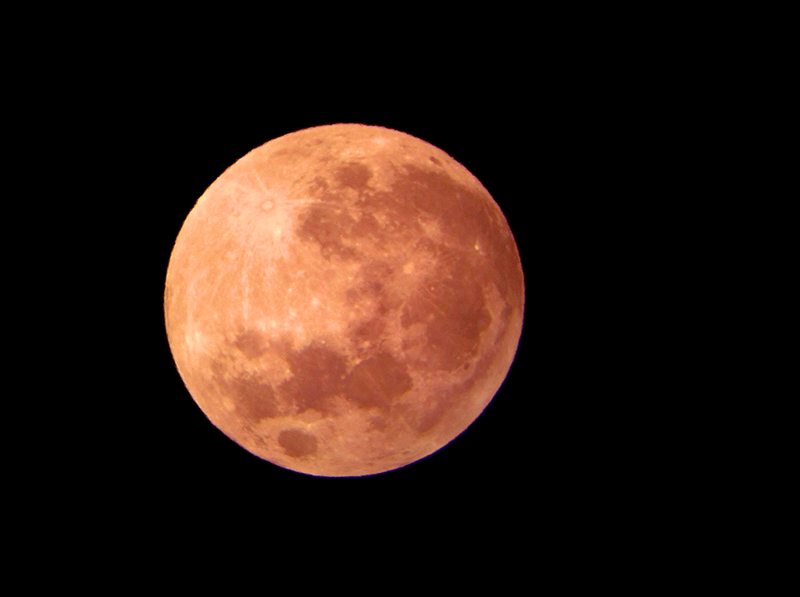A Total Lunar Eclipse

Did you get to see the lunar eclipse this past January right before sunrise? It was tough to see. The Moon was low in the west, and we didn’t get to view the entire eclipse because the Moon set before the eclipse finished. Folks out in the western U.S. got a much better chance to see it than we did since the Moon was higher in the sky for them than it was for us. But on January 20, 2019, if the weather is clear, we’ll be treated to a great lunar show in the sky from start to finish!
A lunar eclipse occurs when the Sun, Earth, and Moon are perfectly aligned. Sunlight falls on Earth, and Earth casts its shadow into space. The Moon’s orbit is tilted a bit with respect to the Earth, so as the Moon orbits Earth, usually the Moon passes a bit above or below the shadow. But, when the Moon passes through the Earth’s shadow, we see the Moon turn brown, red, orange, or gray. This is called a lunar eclipse. If you were standing on the surface of the Moon, the Earth would appear to eclipse the Sun.
The next lunar eclipse visible from the Chicago area will be on January 20, 2019—a Sunday night. The Moon will be in the eastern sky when the eclipse starts at 8:36 pm CST. As it begins to pass into the lighter part of the Earth’s shadow, the color of the Moon will start to change from bright light gray to a progressively deeper tan. Starting at 9:33 pm CST, the Moon will begin to encounter the darker part of the Earth’s shadow and look a bit like a cookie with a bite taken out of it. At 10:41 pm CST, the Moon will be fully within the Earth’s shadow, looking dark red or dark gray. This is called totality. Totality ends at 11:43 pm CST, and the Earth exits the darker part of the Earth’s shadow at 12:50 am CST on January 21. The Moon fully exits the lighter part of the Earth’s shadow at 1:48 am CST on January 21.
If it is clear out and you are away from tall buildings and trees, you should have no trouble spotting the eclipse. The Moon will be high in the sky to the east, southeast, and south. Remember: It will be January, so if it is clear out, it may be VERY cold. Don’t forget to bundle up warmly and grab some hot cocoa or coffee!






